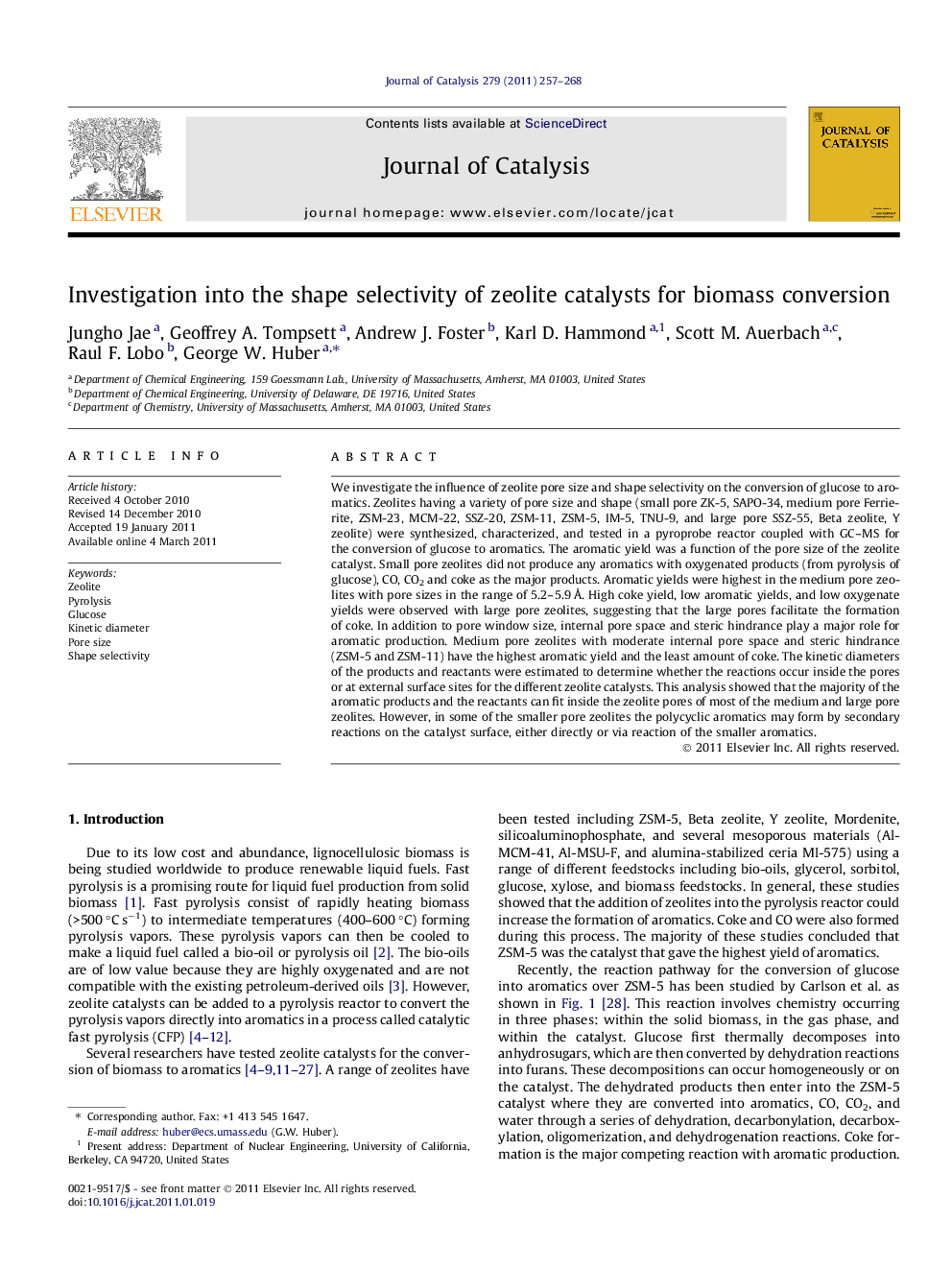| کد مقاله | کد نشریه | سال انتشار | مقاله انگلیسی | نسخه تمام متن |
|---|---|---|---|---|
| 61816 | 47607 | 2011 | 12 صفحه PDF | دانلود رایگان |

We investigate the influence of zeolite pore size and shape selectivity on the conversion of glucose to aromatics. Zeolites having a variety of pore size and shape (small pore ZK-5, SAPO-34, medium pore Ferrierite, ZSM-23, MCM-22, SSZ-20, ZSM-11, ZSM-5, IM-5, TNU-9, and large pore SSZ-55, Beta zeolite, Y zeolite) were synthesized, characterized, and tested in a pyroprobe reactor coupled with GC–MS for the conversion of glucose to aromatics. The aromatic yield was a function of the pore size of the zeolite catalyst. Small pore zeolites did not produce any aromatics with oxygenated products (from pyrolysis of glucose), CO, CO2 and coke as the major products. Aromatic yields were highest in the medium pore zeolites with pore sizes in the range of 5.2–5.9 Å. High coke yield, low aromatic yields, and low oxygenate yields were observed with large pore zeolites, suggesting that the large pores facilitate the formation of coke. In addition to pore window size, internal pore space and steric hindrance play a major role for aromatic production. Medium pore zeolites with moderate internal pore space and steric hindrance (ZSM-5 and ZSM-11) have the highest aromatic yield and the least amount of coke. The kinetic diameters of the products and reactants were estimated to determine whether the reactions occur inside the pores or at external surface sites for the different zeolite catalysts. This analysis showed that the majority of the aromatic products and the reactants can fit inside the zeolite pores of most of the medium and large pore zeolites. However, in some of the smaller pore zeolites the polycyclic aromatics may form by secondary reactions on the catalyst surface, either directly or via reaction of the smaller aromatics.
The influence of zeolite pore size and shape selectivity on the conversion of glucose to aromatics was studied with a range of zeolite catalysts. The kinetic diameters of the products and reactants were estimated to determine whether the reactions occur inside the pores or at external surface sites for the different zeolite catalysts.Figure optionsDownload high-quality image (59 K)Download as PowerPoint slideResearch highlights
► Zeolite catalyst design is critical for achieving high aromatic yields from biomass.
► The aromatic yield is a function of the pore size and internal pore volume of the zeolite catalyst.
► The polycyclic aromatics form by secondary reactions on the catalyst surface.
Journal: Journal of Catalysis - Volume 279, Issue 2, 25 April 2011, Pages 257–268